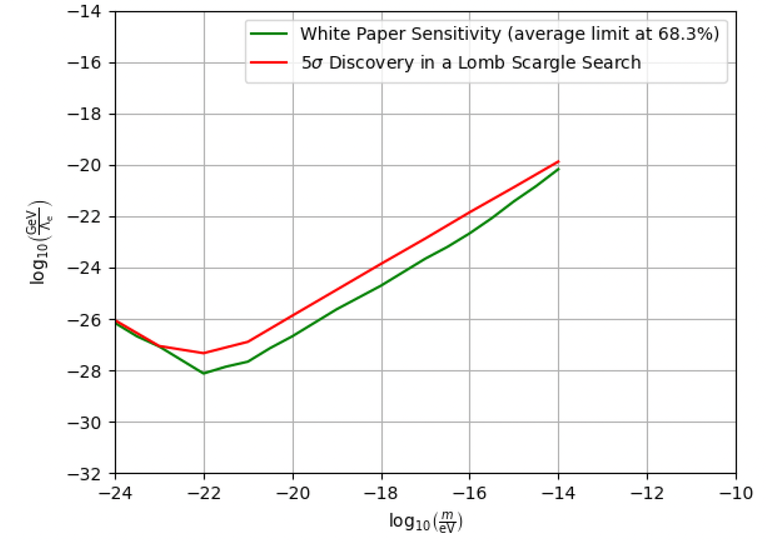Sensitivity Studies and Data Analysis
The Standard Model of particle physics has to be extended to also include dark matter. Searches for ultra-light dark matter particles with masses in the range between 10-22 eV/c2 and 10-10 eV/c2 can be conducted with the help of high-precision clocks. There is a rich phenomenology (more), and the group at HU studies what dark matter couplings can be detected (or constrained) and how the clock data are analysed in an optimal way.

The plot above shows the result of a simulation study where Californium clocks were used to constrain the coupling of a hypothetical scalar dark-matter field to the electromagnetic field. It was assumed that the dark-matter field φ accounts for 100% of the local dark-matter density (0.4 GeV/cm3) and that its coupling to the electromagnetic field is linear in φ. The red curve shows the smallest coupling that can be detected at the 5σ level (local significance) in a search that uses 1 year of QSNET data and the Lomb-Scargle periodogram for data analysis. The green curve was taken from the QSNET White Paper and gives the average expected limit.
